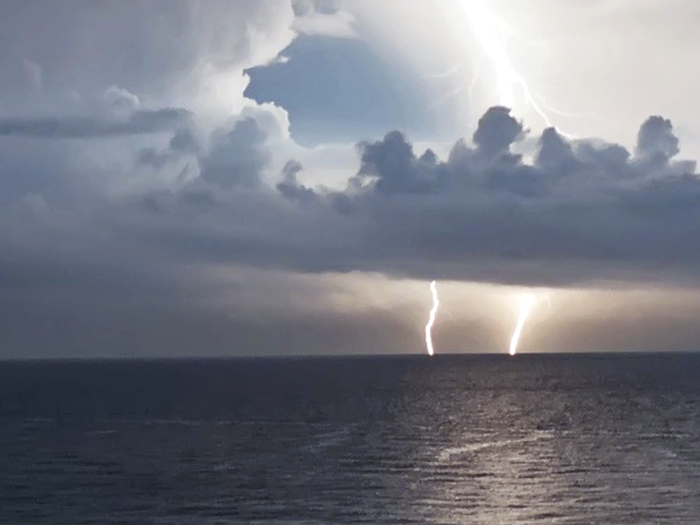Climate Change Liability
The Emerging Tort Storm

Is climate change the next mass tort? A growing number of experts predict it could be, particularly after the ambiguity of a recent large case settlement opened the door for potential mass litigation.
The insurance implications could also be significant, and corporations that might be contributing to climate change should plan now how to mitigate these exposures.
Environmental damage caused by climate change could be “the next mass tort” if future litigators are able to demonstrate a link between environmental damages and greenhouse gas emissions by large corporations, wrote actuary Jill Mysliwiec in a recent Milliman Inc. report, The Cost of Climate Change: Will Companies Pay in Court?
Mysliwiec pointed to the 2011 U.S. Supreme Court case of American Electric Power, which pitted five large-scale private electric power companies emitting greenhouse gases against the City of New York and eight additional states.
In an 8-0 decision, the Supreme Court held that corporations cannot be sued for greenhouse gas emissions under federal common law, primarily because the Clean Air Act delegates the management of carbon dioxide and other greenhouse gas emissions to the Environmental Protection Agency.
“While the AEP case may not have specifically created a path to indemnification, the fact that it didn’t rule out any possible future litigation efforts speaks volumes,” Mysliwiec wrote. “The ruling may be an indication that such potential efforts may in fact be successful in the future.”
Since a major obstacle in litigation has been demonstrating a cause and effect relationship between damages and emissions, and in identifying a specific defendant, future groups of plaintiffs and defendants might be lumped in a single mass tort litigation case, she wrote.
Such plaintiffs could be armed by each defendant’s public disclosures of their greenhouse gas emissions, now required by the EPA.
“If documentation exists proving that a corporation was aware of its harmful operations, avoiding the consequences becomes more difficult,” she wrote.
“As was the case with tobacco and asbestos, we likely will not know whether climate change will be the next mega-tort for many years.” —Warren A. Koshofer, partner, Michelman & Robinson LLP
Warren A. Koshofer, a partner in the Los Angeles office of Michelman & Robinson LLP, said that there are significant hurdles to obtaining coverage for climate change litigation under standard commercial general liability policies, as highlighted by the Virginia Supreme Court decision in AES Corp. v. Steadfast.
“The occurrence hurdle is one that is not readily susceptible to negotiation when new CGL policies are being obtained,” Koshofer said. “The two exclusions can, however, be the subject of negotiations with the insurer.”
Given the current state of climate change litigation, where plaintiffs are having extreme difficulty overcoming the standing and political question doctrines and otherwise establishing claims against emitters of greenhouse gases, the real goal for an insured is to avoid the insurer being relieved of their duty to defend, which is broader than their duty to indemnify, he said.
Separating the duty to defend from the indemnity provisions of the CGL policy is one potential avenue an insured can explore — whether through negotiated sub-limits or the procurement of a stand-alone defense cost policy.
“As was the case with tobacco and asbestos, we likely will not know whether climate change will be the next mega-tort for many years,” Koshofer said.
“While it certainly is following the early pattern of tobacco and asbestos, a key difference is the injuries alleged in climate change cases thus far have been more focused on property damage than the significant bodily injuries that ultimately fueled the plaintiff’s bar to refine and target tobacco and asbestos related cases.”
Lindene E. Patton, chief climate product officer of Zurich Insurance Group in Schaumburg, Ill., who co-authored a book titled Climate Change and Insurance, said that plaintiffs are now experimenting in the tort liability area, as well as claims of statutory violations or noncompliance.
But so far, that litigation is largely at the procedural stage and “not a whole lot beyond that.”
Still, underwriters should consider looking for appropriate risk management practices from clients that could be potentially exposed to such litigation — whether that is greenhouse gas emitters or professional service providers, such as engineers or consultants who do work involving greenhouse gas or adaptation to climate change, Patton said.
For example, she said, engineers need to understand that the law is now examining whether “conduct evaluating and managing climate-related risks not only should consider historical exposures, but also projected exposures in the future. If an engineer is going to deliver a product to customer who declines to address future exposures expected by climate scientists, then engineers need to explain to their clients the range of potential impacts based on the expert advice.”
There might be dispute about which science to apply. And if a loss occurs, litigation might lead to the ultimate determination of who was right and who was wrong, Patton said. However, underwriters might have to pay for defense expenses, even if the carriers ultimately have no indemnity expenses. This will be true for professional liability policies as well as general liability policies, to the extent they are triggered.
“People who believe that they have followed the law and received a permit to build or have purchased a property may wake up one day with their property blown away or underwater, with no mechanism to get relief, and they may look elsewhere for compensation,” she said. “This appears to be what we’re seeing in some cases of climate change litigation.”
Mysliwiec suggested that companies mitigate potential exposures by forming partnerships with governmental entities to develop a means for funds to be pooled and set aside for damages.
Companies, either individually or as a group, should also take a proactive approach to provide funds to cover losses, “in an effort to appeal to consumers,” she wrote.
In addition, insurers should develop a means to provide the funds for these losses, potentially through the use of catastrophe models.
“It would be advantageous to all parties involved for a proactive solution to be explored, in an effort to avoid the high costs of defense and litigation that may come from a less assertive approach,” Mysliwiec wrote.
“This uncertainty and our society’s current state could be creating an ideal situation for the next mass tort of our generation. The money to pay for the damages will have to come from somewhere and it remains to be seen just where that deep pocket may be hiding.”










